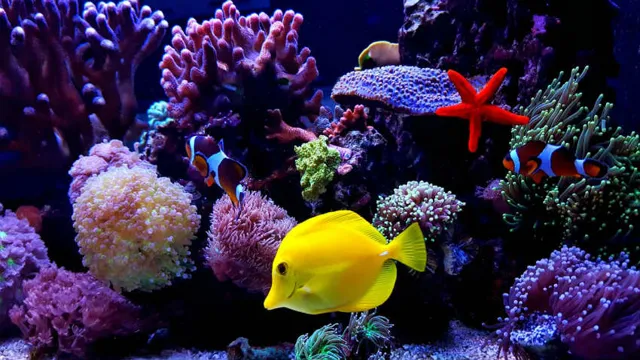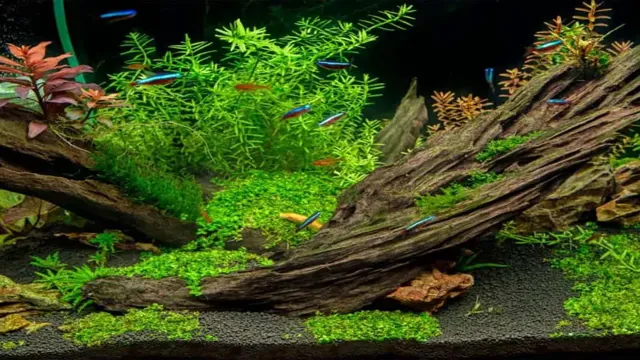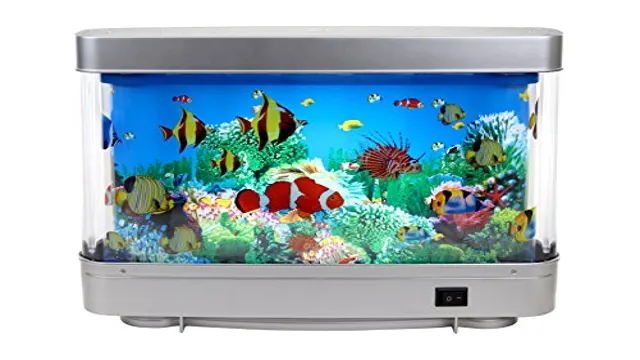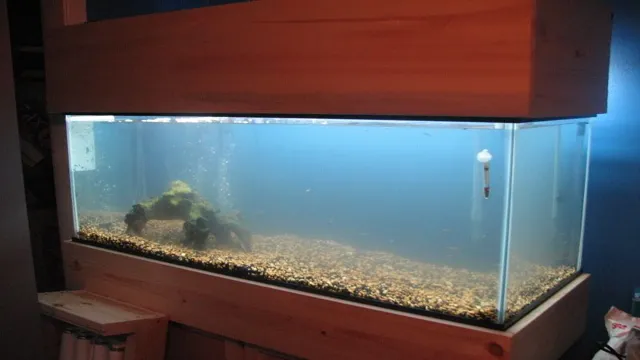As a pet owner, one of your priorities should be keeping your aquarium water clean and healthy for your fish and plant life to thrive. But, maintaining the perfect aquatic environment can sometimes feel like an uphill battle. With so many factors that can affect the water quality, it can be challenging to know where to start.
Don’t worry – we’ve got you covered! In this blog, we will provide you with some useful tips and tricks on how to keep your aquarium water clean and healthy. From regular water changes to maintaining proper filtration systems, we’ll cover everything you need to know to ensure your aquatic pets are living their best lives. So, if you’re ready to dive into the world of aquarium maintenance, let’s get started! By taking care of your fish’s environment, not only will they be happier and healthier, but you’ll also be able to enjoy a beautiful and thriving aquarium for years to come.
Importance of Aquarium Water Quality
Maintaining clean and healthy aquarium water is crucial for the well-being of aquatic life. Poor water quality poses a variety of risks, including disease, stress, and death. To keep aquarium water clean and healthy, you’ll need to monitor and adjust the water’s pH level, control the amount of waste buildup, and provide adequate filtration.
Regular water changes are also essential to remove contaminants and replenish essential minerals and nutrients. Using live plants and natural additives can help maintain the balance in the aquarium’s ecosystem and minimize the risk of harmful bacteria growth. By taking the appropriate steps, you can keep your aquarium water safe and healthy for your aquatic pets to thrive.
Why Water Quality is Essential for Aquarium Health
Aquarium water quality is a crucial aspect of maintaining a healthy aquatic environment for your fish and other creatures. Poor water quality can cause a range of health problems for your aquarium inhabitants, including stress, illness, and even death. To keep your aquarium water quality in top shape, regular water changes, filtering and testing are essential.
The water’s pH level, nitrate, ammonia, and nitrite levels should be monitored and maintained within acceptable limits. It is also important to avoid overfeeding your fish, which can lead to the accumulation of uneaten food and waste in the water, causing further deterioration of the water quality. Remember, maintaining a healthy aquarium takes effort and consistency, but the love and enjoyment of watching your aquatic creatures thrive in a clean, safe environment is well worth it!

Factors Affecting Water Quality in Aquariums
Aquarium Water Quality Maintaining clean and healthy water is essential in keeping your aquarium thriving. The quality of water in your aquarium is crucial to the health and wellbeing of the inhabitants. Factors that can affect the water quality include physical, biological, and chemical.
Physical factors such as lighting, temperature, and water movement can influence the growth of bacteria and algae, which can lead to poor water quality, especially in uncycled tanks. Biological factors, on the other hand, result from the interaction between living organisms and their environment. The uneaten fish food, waste from fish, and dead plant matter can build up and cause toxic levels of toxins to the aquarium water.
Chemical factors are elements or compounds found in the water that can create imbalances and toxic conditions that can be harmful to fish and plants. The most common chemical factors that can affect aquarium water quality include pH, ammonia, nitrite, nitrate, and phosphate levels. Keeping your aquarium clean and healthy for your aquatic creatures will require regular maintenance to check and balance these factors through proper filtration, proper feeding, and monitoring the water parameters.
Understanding the importance of aquarium water quality and its various factors will help you maintain a healthy, thriving aquarium ecosystem.
Maintaining Proper Water Quality in Your Aquarium
Maintaining proper water quality is key to keeping your aquarium environment healthy for your fish. To start, it’s important to regularly test your water for parameters such as pH, ammonia, nitrite, and nitrate levels. If any of these levels are off, you can make necessary adjustments with products such as pH adjusters or water conditioners.
It’s also important to perform regular water changes to remove any excess waste or debris that can build up and negatively impact water quality. Adding live plants to your aquarium can help absorb any excess nutrients, while a good filtration system can help keep the water clean and clear. Finally, avoid overfeeding your fish, as excess food can quickly lead to poor water quality.
By following these simple steps, you can help ensure that your aquarium water remains clean and healthy for your fish to thrive in. (See Also: How to Acclimate New Fish to Your Aquarium: A Step-by-Step Guide for Beginners)
Regular Water Testing
Regular water testing is an essential aspect of maintaining proper water quality in your aquarium. Testing your aquarium water regularly will ensure that the water has the correct balance of pH, nitrates, nitrites, and ammonia. The water test can also alert you to other potential issues such as high levels of chlorine or copper, which can harm your fish.
When it comes to testing water quality, the most critical element is the frequency of testing. Regular testing can help you catch any problems before they become too serious. A good practice is to test your water every week.
However, if you have a lot of fish or a heavily planted aquarium, you might need to test more frequently. Furthermore, regular water testing can also save you time and money. Not only will you avoid costly water changes, but you can also detect any problems early, which can save you money on treatment costs.
In conclusion, testing your aquarium water regularly can keep your fish healthy and happy and ensure that you enjoy your aquarium to the fullest.
Frequent Water Changes
Maintaining proper water quality is essential for the health of your aquarium inhabitants, and one of the most critical aspects is frequent water changes. In general, it’s recommended to change out 10-20% of the water in your aquarium each week. This not only removes excess waste and toxins but also replenishes important minerals and nutrients that keep your aquatic ecosystem healthy.
That being said, it’s essential to make sure the water you’re adding back in matches the temperature and pH level of the existing water to avoid stressing out your fish and other inhabitants. You can also add water conditioner to remove chlorine and other harmful chemicals commonly found in tap water. By staying on top of regular water changes, you’ll create a clean and healthy environment for your aquatic pets to thrive in.
Filter Maintenance
Proper filter maintenance is crucial to maintaining a healthy and thriving aquarium. Your filter is responsible for removing harmful debris and waste from the water, which is essential for keeping your fish and plants healthy. To ensure your filter is working optimally, it’s important to clean and replace the filter media regularly.
Mechanical media, like filter sponges, should be cleaned every two weeks, while biological media, like ceramic rings or bio-balls, only need to be replaced every six months to a year. It’s also important to check that the flow rate of your filter is still sufficient for your aquarium size. A clogged filter can impede water flow and lead to poor water quality, which can be harmful to your aquatic pets.
By staying on top of filter maintenance and replacement, you can prevent potential problems and keep your aquarium beautiful and healthy for years to come.
Adding Activated Carbon
Maintaining proper water quality in your aquarium is essential for the health and wellbeing of your fish. One way to ensure this is by using activated carbon. Activated carbon has a porous surface that attracts and absorbs impurities such as chlorine, odors, and organic pollutants.
It is also great for removing yellowing from the water. However, it is essential to replace it regularly, as it can lose its absorption capabilities over time. Additionally, it is important to rinse the activated carbon thoroughly before using it to prevent any dust or debris from entering the tank.
With the regular use of activated carbon, you can keep your aquarium water clean and clear for your fish to thrive in.
Choosing the Right Fish and Aquarium Plants
Keeping your aquarium water clean and healthy is crucial for the well-being of your fish and plants. When considering which fish to add to your tank, it’s crucial to research their needs and compatibility with other species. Adding too many fish can lead to overpopulation and increased waste production, making it harder to maintain clean water. (See Also: How to Get Aquarium Fish to Grow: Tips and Tricks for Maximizing Growth Potential)
Additionally, incorporating live aquarium plants can improve the quality of your water by absorbing waste and releasing oxygen for your fish. However, it’s essential to choose plants that are compatible with your fish, as some species may eat or uproot them. With the right combination of fish and plants, regular water changes, and proper filtration, you can keep your aquarium water sparkling clean and healthy for your aquatic pets.
Fish Compatibility
When it comes to setting up an aquarium, choosing the right fish is crucial for ensuring compatibility and a thriving environment. Before purchasing any fish or plants, it’s important to research their individual requirements for water quality, temperature, and behavior. Some fish species are more aggressive than others, and keeping them with timid or peaceful fish can lead to dominance battles and stress.
Similarly, certain plants may not tolerate the water conditions required for certain fish, and can die off quickly. By taking the time to carefully research and select compatible fish and plants, aquarists can create a harmonious and beautiful aquatic ecosystem. Don’t be afraid to seek advice from experts or experienced fishkeepers – their knowledge can be invaluable in ensuring the success of your aquarium.
Minimum Tank Size for Different Fish Species
When it comes to setting up an aquarium, choosing the right fish and aquarium plants plays a crucial role. One of the most important factors to consider is the minimum tank size required for each fish species. This is because fish need enough space to swim freely and live comfortably.
It is essential to research the specific needs of each fish species to ensure that they are kept in a suitable environment. Some fish species, such as goldfish, require a large tank with plenty of water volume, while others like betta fish are comfortable living in smaller tanks. Aquarium plants also play a significant role in fish health and tank maintenance.
Live plants provide oxygen and absorb excess nutrients, creating a balanced ecosystem. By selecting the appropriate fish and aquarium plants for your tank, you can create a healthy and visually appealing environment for your aquatic pets.
Benefits of Aquarium Plants
Aquarium plants not only add a beautiful visual element to your fish tank but also provide a multitude of benefits for your underwater friends. The right aquarium plants can purify the water and provide oxygen through photosynthesis. They also serve as a natural habitat, hiding spot, and food source for your fish.
When choosing the right fish and aquarium plants, it’s important to consider the compatibility between the two. Some fish may enjoy munching on plants, while others may prefer a heavily planted environment. Additionally, certain plants may require specific lighting, fertilization, and water conditions to thrive.
Overall, incorporating a variety of aquarium plants into your fish tank can promote a healthy and thriving ecosystem for your aquatic pets.
Conclusion
In conclusion, keeping aquarium water clean and healthy requires a combination of proper maintenance, equipment, and a little bit of love. It is crucial to establish a regular cleaning routine, monitor water quality parameters regularly, and invest in high-quality filtration systems. Additionally, introducing beneficial bacteria, providing adequate oxygenation, and avoiding overcrowding can contribute significantly to the overall health and happiness of your aquatic pets.
Remember, a clean tank is a happy tank, and nothing beats the satisfaction of watching your fish thrive in their underwater paradise. So, dive right in and make sure your aquarium is a clean, healthy, and vibrant ecosystem for all its inhabitants. Happy fish-keeping!”
Summary of Best Practices for Aquarium Water Health
When it comes to maintaining good water health in your aquarium, choosing the right type of fish and plants is essential. Different species of fish have different needs, and it’s important to ensure that the fish you choose can thrive in your aquarium’s environment. Some fish are hardy and can tolerate a wide range of water conditions, while others are more sensitive and require a specific pH level or temperature. (See Also: How to Make Aquarium UV Filter Air Intake: A Step-by-Step Guide)
Similarly, selecting the right plants for your tank is crucial. Aquarium plants not only add visual interest to your tank, but they also help to maintain water quality by absorbing excess nutrients and producing oxygen. Be sure to research the specific care requirements for any fish or plants you’re considering, and don’t be afraid to ask for advice from knowledgeable professionals at your local pet store.
By choosing the right fish and plants, you’ll be setting yourself up for a successful and healthy aquarium ecosystem.
FAQs
What are some common causes of dirty or cloudy aquarium water?
Common causes of dirty or cloudy aquarium water include overfeeding, lack of filtration or water changes, overstocking, and the presence of decaying organic matter.
How often should I perform water changes in my aquarium?
It is recommended to perform a 25% water change every 2 weeks for most aquariums. However, heavily stocked aquariums or those with delicate species may require more frequent water changes.
Can adding plants to my aquarium help keep the water clean?
Yes, aquatic plants can help absorb excess nutrients and improve water quality in your aquarium. They also provide a natural and aesthetically pleasing environment for your fish.
What type of filtration system should I use for my aquarium?
The type of filtration system you use will depend on the size of your aquarium, the type and number of fish you have, and your personal preferences. Some common types of filtration include hang-on-back filters, canister filters, and sponge filters.
Is it necessary to use a water conditioner when adding new water to my aquarium?
Yes, using a water conditioner is necessary to remove any harmful substances, such as chlorine and heavy metals, from tap water before it is added to your aquarium.
How can I prevent algae growth in my aquarium?
You can prevent algae growth by avoiding overfeeding, performing regular water changes, and limiting the amount of light your aquarium receives. You can also introduce algae-eating species, such as snails and certain fish, to help keep the algae under control.
What should I do if my fish are getting sick frequently?
If your fish are getting sick frequently, it may be a sign of poor water quality. Test your aquarium water parameters and make any necessary adjustments to improve water quality. You may also need to quarantine any sick fish and treat them with appropriate medications.







